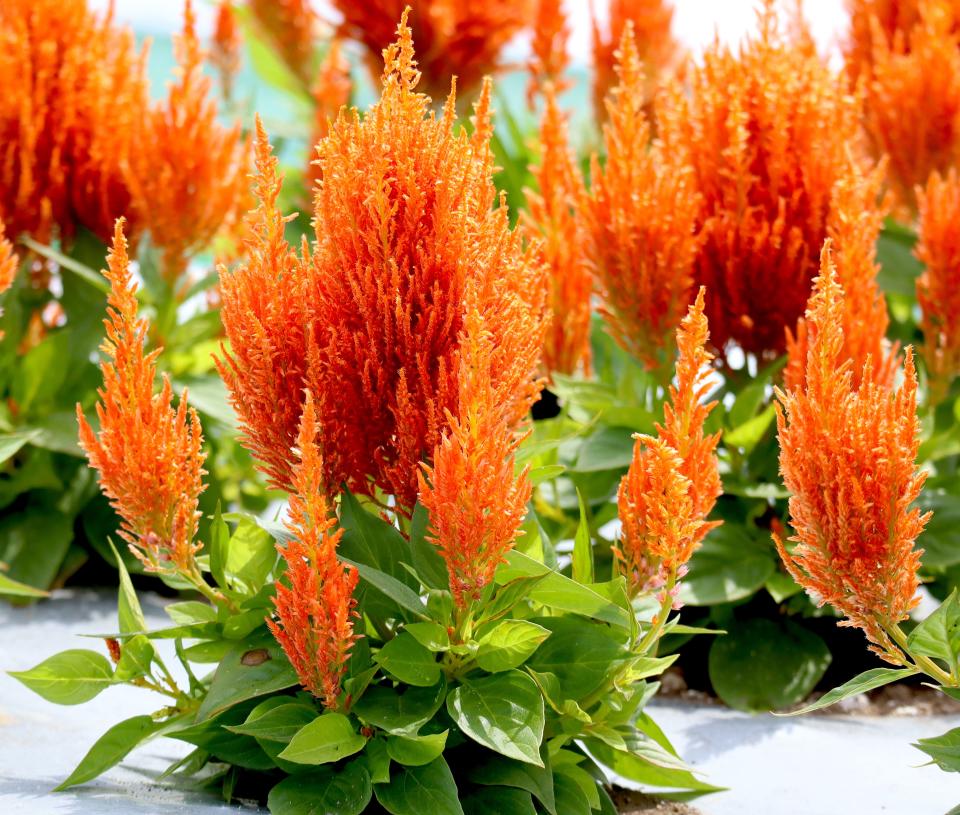Even though August temperatures are still well into the 100s, we have the promise of autumn just around the corner. And with autumn days is a much-anticipated relief from summer heat with refreshing, cooler days. Gardeners can once again plan for color in the ornamental garden.
Some favorite tender perennials and annuals with showy displays can be established in gardens now. Some that will give several months of color include Alyssum, Angelina, aster, daisy, Dianthus (pinks), pot marigold, pansy, Pentas, Salvia, Scabiosa, snapdragon, strawflower, Verbena, and Veronica.
Real winners for showy displays that are also pollinator magnets are the Celosias. As a name, Celosia is the scientific name for its genus and it is used also as a common name. The name Celosia comes from the Greek “keleos”, which means burning, referring to its brilliantly colored flowers.
There are 60 or so species of Celosia, but the two most common are Celosia cristata and Celosia plumosa. Celosia cristata is better known by its common name of cockscomb. The species name cristata means crested for its distinctively unusual inflorescence that resembles the comb of a rooster, thus the common name cockscomb.
But it is the flaming-hot “Flamma Orange” (the orange flame) Celosia that has captivated gardeners this year. “Flamma Orange” is a Celosia plumosa cultivar that was an AAS (All-America Selection) winner in 2022. It was bred and released by Clover Seed Co., distributed in North America first by Sakata Seed Corp. and is now available from Parks Seed and Harris Seed.

The species name plumosa means feathery. The “Flamma Orange” in the accompanying photo provided by the National Garden Bureau has strong plumes that gives its prolific inflorescences a feathery appearance. Compact plants bearing the feathery plumes give a long show of vibrant orange in the garden. “Flamma Orange” plants exhibited exceptional performance in regional AAS trials of hot climates, making it suitable for the Lubbock region.
Winning an AAS award is a prestigious honor. As the only national, non-profit plant trialing organization in North America, the mission of AAS is to promote new garden varieties with superior garden performance. Hundreds of new cultivars from seed companies are submitted into the annual AAS competition. Entries are judged by volunteer horticultural professionals in multiple regional locations and the top garden performers are given the AAS Winner award designation for their superior performance (all-americaselections.org).
The Horticultural Greenhouse and Gardens on the Texas Tech University campus in Lubbock has grown and judged AAS selections in past years.
Place plants of “Flamma Orange” in well-drained soils receiving supplemental irrigation. All Celosia plumosa cultivars need full sun to maintain vibrantly colored plumes.
Stagger placement of cultivars of differing heights and bloom color in garden beds to provide a varicolored effect of colors and texture. Celosia may become your favorite fall flower.
Ellen Peffley taught horticulture at the college level for 28 years, 25 of those at Texas Tech, during which time she developed two onion varieties. She is now the sole proprietor of From the Garden, a market garden farmette. You can email her at [email protected]
This article originally appeared on Lubbock Avalanche-Journal: Gardening for You: Celosia for flaming-hot fall color










